Are they making NY’s new hall ‘less of a fortress’?
NewsSusan Hall has some interesting thoughts in Berkshire Fine Arts.
Audience, Audience, audience. This is not about improving acoustics, the central problem. It is about attracting an audience by making the Hall seem less like a “fortress”, a word used often by (Lincon Center chair Kathleen) Farley….
The NY Phil stage has now been moved forward 24 feet. On stage seating is now perched behind the orchestra. Of the eight rows, the front two can be removed, or the front four, but the back seats will always be there.
Simply put, human bodies are part of what makes good sound, and where bodies sit is important for good acoustics. Scarbrough hopes that new audience members will challenge themselves to find preferred seats.
At Symphony Hall in Chicago, the first seats to sell out are neither the cheapest nor the fanciest. ‘Terrace’ seats go in a flash. They are on stage and directly behind the orchestra. You sit in the middle of the sound, watch the conductor face first, and look down directly on the percussion section. It’s exciting. The music performed is exciting too.
Seating cover materials will blossom with flowers. This covers the fact that seats will be as close to comfortable as possible, but still thin. This is true also of the seat backs. Anyone who has sat in hard seats at Symphony Hall in Boston, or the Bayerische State Opera in Munich, knows that there is a reason for them: Thin seating materials aid acoustics. Boston is a gold standard in acoustics…
Read on here.

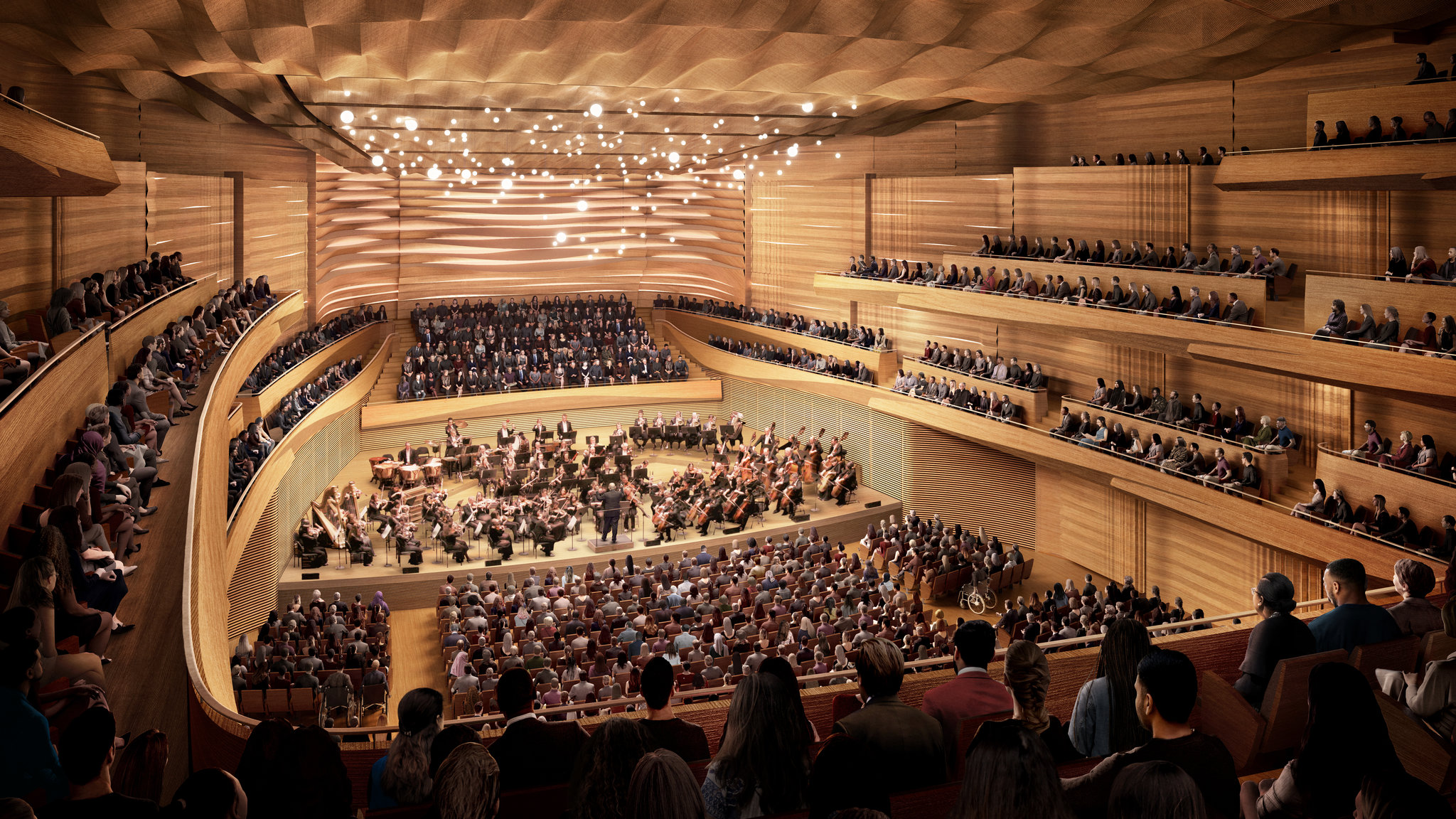
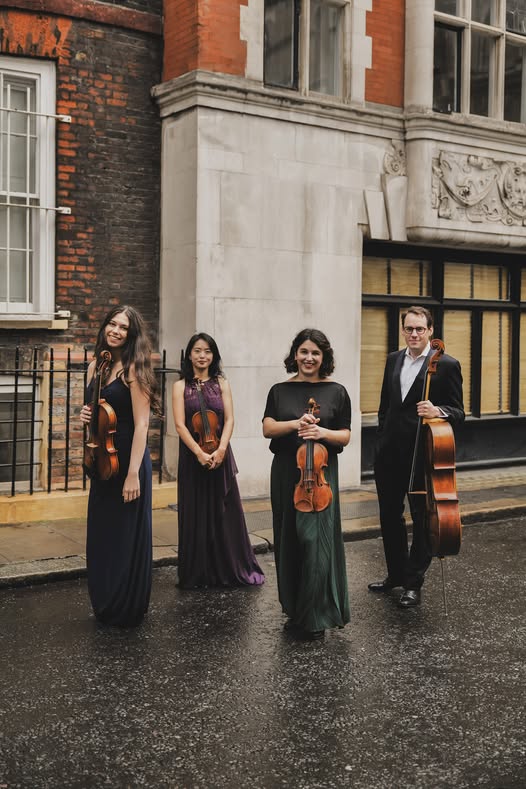
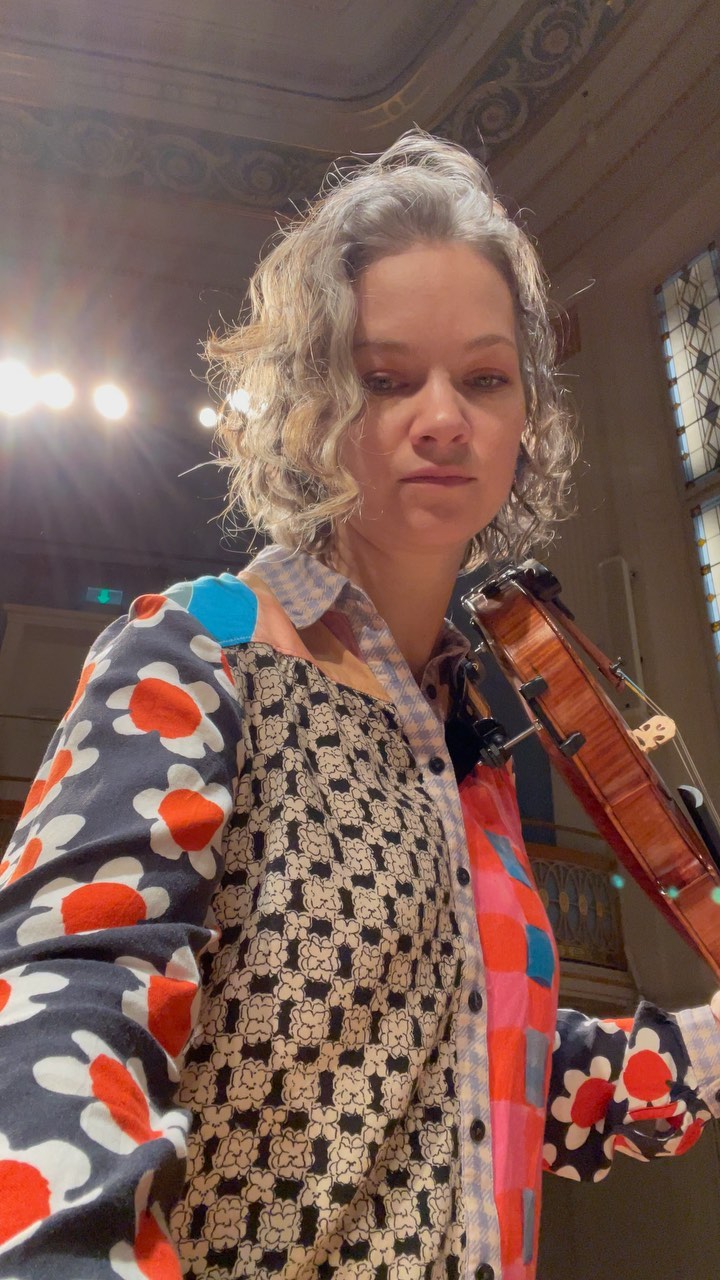
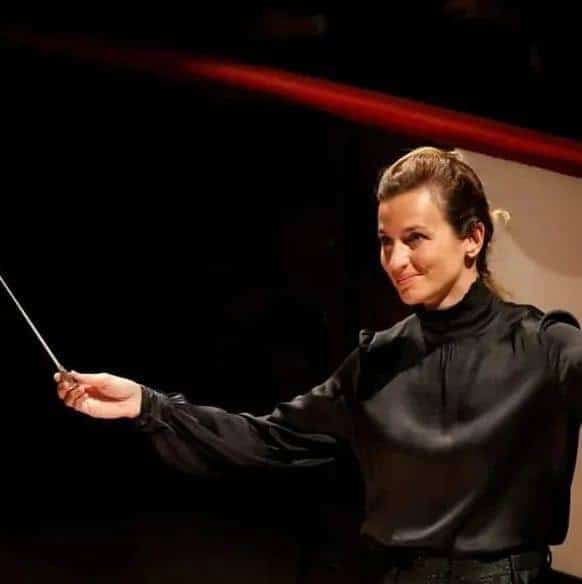
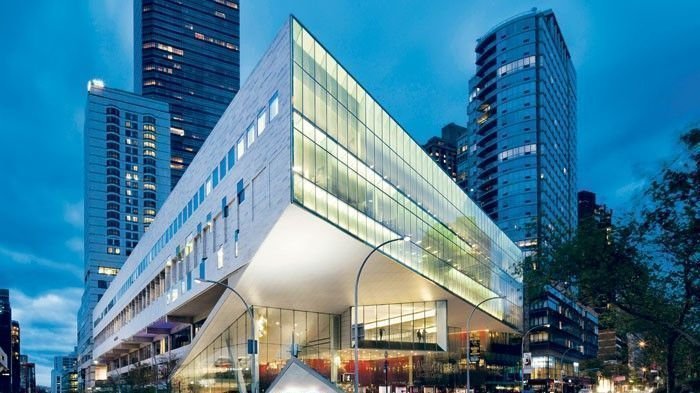
It all looks great and apparently sounds great until one sees the hideous eyesore of a textile they chose to cover the seats. Makes it look like they are ready to host a childs birthday party.
They’re quite similar to those in at Disney Hall.
I also want to say that I saw the RCO perform in Chicago and I somewhat regret having sit in the terrace seats because the sound was too directed away from me for my taste, and I couldn’t see the first violins very well.
If they sell enough tickets, few will notice the textile. 🙂
Trading a “fortress” for a sterile surgical/autopsy classroom.
Give me a gorgeous theatre any day. These modern shoeboxes might as well be basketball gyms IMHO.
Come to Milwaukee, you’ll love our concert hall! And our orchestra, hopefully.
After reading her article, what I came away with is a sneaking suspicion that someone (or someones) already know the acoustics won’t be better than Avery Fisher Hall was before the renovation. I hope that’s not true, but I think it is.
Terrace seating is the worst, you hear nothing but the timpani and the trombone, and if the soloist is a singer, have fun watching his/her back all night, because you won’t hear a single note.
As for watching the conductor. Trust me, it gets old (no pun intended) in 5 seconds. It’s not a pretty sight.
Don’t be cheap, pay for the good seats.
Not true in either Chicago or Berlin. To each his own.
Same same everywhere. Also Chicago or Berlin. Remember well Berlin with Abbado in the 90s, sitting directly behind the orchestra. Interesting to watch Abbado. The sound was horrible, fingers in ears a few times, cacophony, made no sense at all. Heard zero from the vocal soloists. A travesty.
One of my friends from the Phil who did acoustic rehearsals without audience last week reported that the hall sounded fine.
How many months and gazillions of dollars later … and the hall sounds “fine.”
Great.
Better than not sounding fine, eh?
It is the NY Philharmonic after all, they’ll never sound more than “fine”, no matter what hall they are in, you can’t buy a sound.
To compensate for the necessity of thin seats patrons are encouraged to bulk up personal padding with donuts and beer in-between meals.
I think they’re trying to be like Walt Disney Hall in LA (one of the best places in the world to hear classical music)…doubtful it will happen though
Disney Hall is ok, but not great, for the core romantic repertoire. Bit cold in spectrum, bit weak in overall loudness and impact, nothing like Boston, Amsterdam or Goldener Saal in Vienna. (or Gewandhaus Leipzig, one of the few modern ones that is great)
Not enough blend, not enough envelopment in fortissimo, but good for analytical Boulez. Like most halls Toyota designed.
This comment makes no sense. I can’t imagine anyone wishing the Disney Hall to be any louder when they’re listening to, say, Berlioz’s Requiem or the coda of Mahler’s 2nd, unless they don’t have human ears. Any louder would likely result in hearing loss.
The halls you mentioned as exemplary are ideal for classical repertoire and romantic repertoire scored for moderately sized orchestra. For late romantic repertoire with complex orchestration the details are often swamped and you get a pretty halo of sound, which sells those composers short. At the extreme loud end of dynamics those halls also get very congested.
Your comment makes no sense. Mahler 2 is not the benchmark. It is an extreme. Funnily the ONLY music that the ghastly Munich Gasteig (Bernstein: “burn it!”) was good for were the finali of Mahler 2 and 8.
If you had a basic understanding of acoustics you would know, that loudness in terms of concert halls is a relative measure, of how much of the sound reaches the listener, and pereferably with the right main incidence angles for reflected sound and over the full spectrum of frequencies and dynamics.
And Concertgebouw or Boston do not get congested at loud levels, compared to Disney or Elbphilharmonie. Not at all. But Disney and even more so Elphi make the sound MONO. flat. (bad binaural index for the nerds)
“Mahler 2 is not the benchmark. It is an extreme”
If your repertoire is squarely centered on Brahms and Bruckner and similar type of sound, sure. I don’t think a hall built in the 21st century should disregard music from the 20th century.
“Concertgebouw or Boston do not get congested at loud levels”
They definitely do. Their resident orchestras have learned not to play louder than the hall can handle, therefore you don’t hear that kind of sound often. And the hall acoustics is such that even at reduced volume the sound is full and rich, so you don’t feel anything is missing. For visiting orchestras it’s another story. I also don’t think I’m alone in thinking that these two orchestras (KCO and BSO) often sound slightly under-powered when they are playing elsewhere. It’s not a coincidence that neither of these orchestras is known for their power. This is not a criticism btw since orchestras obviously need to adapt to their halls.
Disney doesn’t sound flat at all. “Flat” is the last adjective I would use to describe that hall. Any recording made from an audience seat will show you that. Elphi is less successful but not as bad as you made it out to be.
You can hear the acoustic quality of a concert hall in recordings made in the places you mention. There is way less clarity and innate reverb in Boston than you want to admit there is.
They’ll just sound better like they always have. NY is a superior orchestra. It’s not even close.
How about the fact that the musicians themselves seem to love the sound, in fact, finding it “magical” and that acoustics have always been the primary focus of the renovation?
Musicians perspective (on stage) is another beast altogether acoustically than audience perspective.
Ideally both groups are served well by the acoustics. If that’s the case now in NY, then it would be fantastic. But often they don’t.
Some of the best halls (e.g.Amsterdam) are known for tricky acoustics on stage.
But better this way than the other way around. The worst are good stage acoustics not translating to the auditorium, for obvious reasons.
They are still tweaking the onstage acoustics. My Phil friends tell me the sound in the audience is great.
“ ‘Terrace’ seats go in a flash. They are on stage and directly behind the orchestra. You sit in the middle of the sound, watch the conductor face first, and look down directly on the percussion section. It’s exciting.”
It is exciting once in a while for the visuals and immediacy of physical proximity to the players, or interesting for conducting students. As for the sound, it’s horrible. Loud timpani, deafening percussion, blaring sharp horns, no celli, weak upper strings, nothing from solo singers, weak other instrumental soloists. Really bad.
As I said, interesting once in a while, like how it’s interesting to visit the machine room of a cruise ship, or the kitchen of a fine restaurant. But nothing like the actual experience of well balanced music.
The author suffers from East Coast flyover country syndrome. There are some go things going on in the flyover world. The Dallas Symphony Hall for one.
Yes indeed!! The acoustics in St Louis are some of the best around. Plus that orchestra sounds absolutely sublime these days. Word on the street is that a renovation is coming there in the next couple years; expansion of lobby, administrative offices (of course) and probably little for the musicians because who gives a damn about them… but fingers crossed they don’t mess the sound in the hall and dry it up like so many modern spaces…
But then you’d actually have to go to St. Louis.
Dallas Symphony Hall is really great, but was in all fairness the brain child of an East Coast acoustician, Russell Johnson, NY. 😉